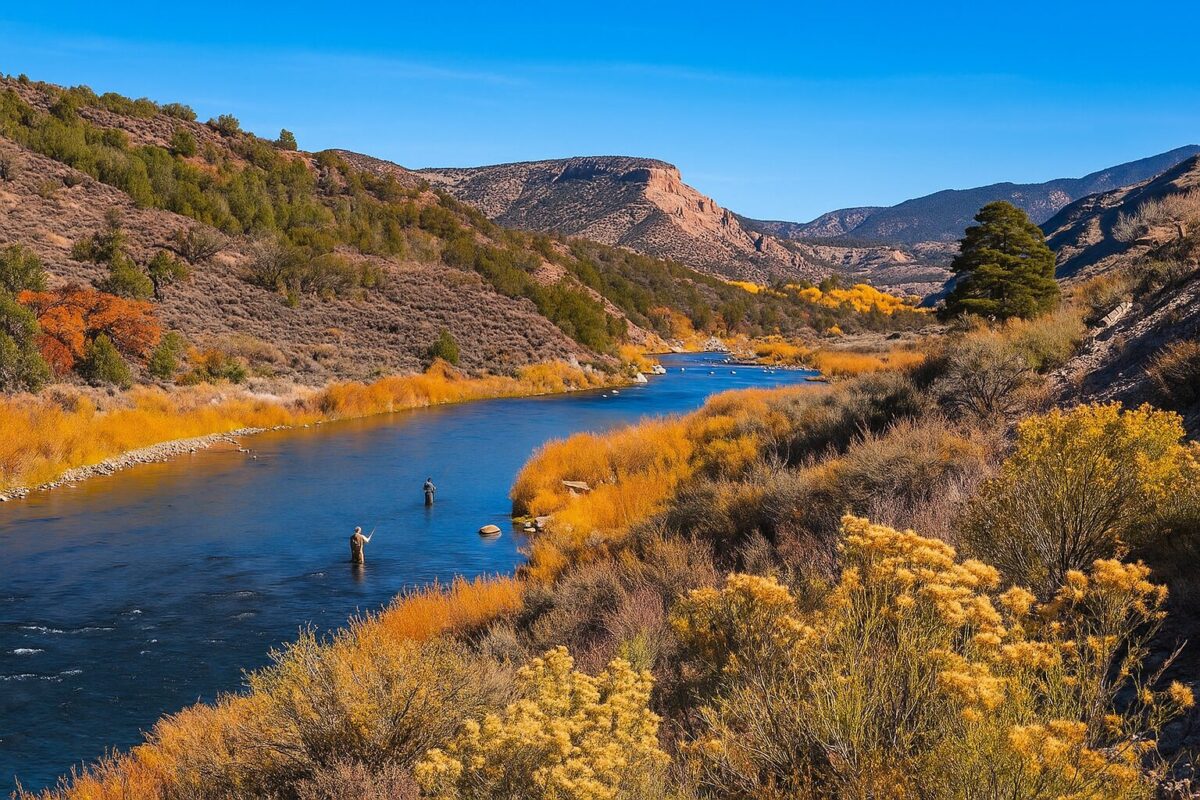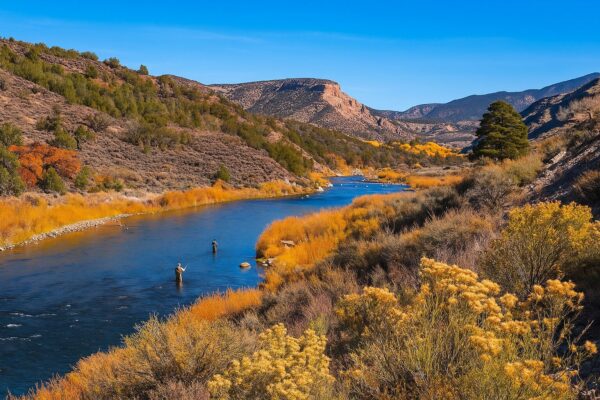Cimarron is surrounded by expansive ranches – including the CS Ranch, Vermejo Park Ranch, Express UU Bar Ranch, and Philmont Scout Ranch, each encompassing hundreds of thousands of acres – as such Cimarron benefits from strong local commitment to collaborative wildfire mitigation efforts. The devastating Ute Park Fire of 2018 burned over 36,000 acres, creating significant uncertainty within the community and highlighting the constant threat posed by wildfires.
This was preceded by the Ponil Complex Fire in 2002, which scorched approximately 92,470 acres, including much of Philmont’s North Country. More recently, the Calf Canyon/Hermits Peak Fire of 2022 became the largest wildfire in New Mexico’s history, burning over 341,000 acres in the southern Sangre de Cristo Mountains. These successive fires have had a profound impact on Cimarron and the entire region, intensifying the collective commitment to proactive wildfire prevention and mitigation strategies.
The Village of Cimarron and many surrounding communities rely exclusively on surface water sources such as lakes and streams, without access to groundwater wells. This dependency makes the region particularly vulnerable to the effects of wildfires on watersheds. During the Ute Park Fire, many watersheds were severely burned, impacting water quality across the area.
Fortunately, Cimarron’s primary reservoir narrowly avoided destruction; damage to this single watershed could have devastated the community and potentially forced many residents to leave permanently. This heightened vulnerability underscores the community’s commitment and drives their motivation to support activities and projects to prevent catastrophic wildfires that could irreversibly affect the region and its future.
Historically, the Village of Cimarron thrived as a logging community, once hosting four sawmills that employed over 400 people within the county. These mills were supported by the Cimarron and Northwestern Railway, which transported timber to the Continental Tie and Lumber Company for the production of railroad ties and mining supports.
Over the last several years, Cimarron has made major infrastructure upgrades, including the construction of a new water treatment facility, the replacement of sewer and water lines in various parts of the community, and the addition of new bridges. Roads throughout the community have been significantly improved with a base course of millings, transitioning from dirt roads to more durable surfaces capable of supporting semi-truck traffic without undue strain.
However, suitable housing stock, essential to attract people to live locally is in short supply. These improvements, along with the adoption of the Local Economic Development Act under New Mexico state statute, have better equipped Cimarron to attract and support new economic development opportunities. Additionally, Cimarron is designated as an Opportunity Zone, providing tax incentives for investments that promote economic growth in underserved and disadvantaged communities such as….. This designation underscores the village’s need for and commitment to sustainable development that benefits its residents and the surrounding region.
Despite past economic challenges, including the consolidation of smaller ranches by large operators like Express Ranches in the 2000s, which led to declining school enrollments and fewer families, Philmont Scout Ranch remains the largest economic driver. However, the area’s seasonal economy and the loss of local ranching jobs have further strained the community.
This innovation district seeks to reverse these trends by leveraging abundant local biomass from forest restoration efforts to reduce wildfire risks, restore ecological balance, and provide sustainable economic opportunities. Supported by strong community leadership, local stakeholder engagement, and robust infrastructure, including the well-suited Tricon mill site, the project aligns with Cimarron’s goals of economic diversification, environmental stewardship, and community revitalization. By leveraging its strategic location, proximity to transportation networks, and a clear vision for sustainability, Cimarron can pioneer a scalable and mobile circular economy model, fostering long-term prosperity and positioning itself as a leader in renewable energy and sustainable development.




